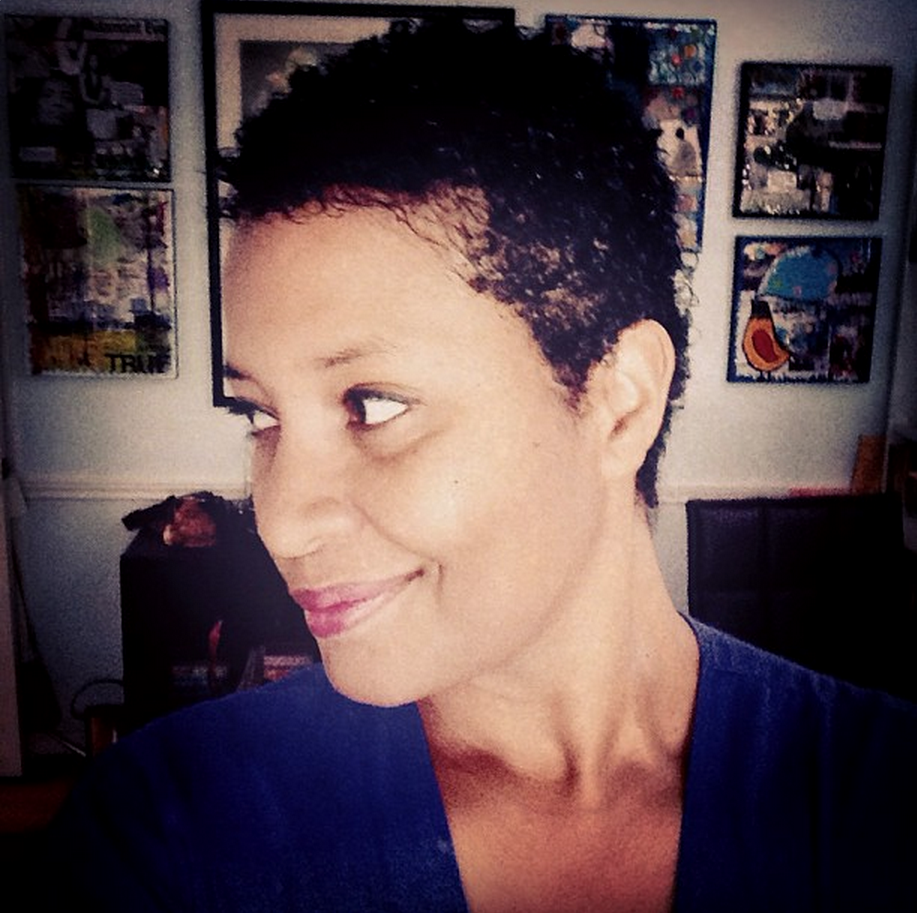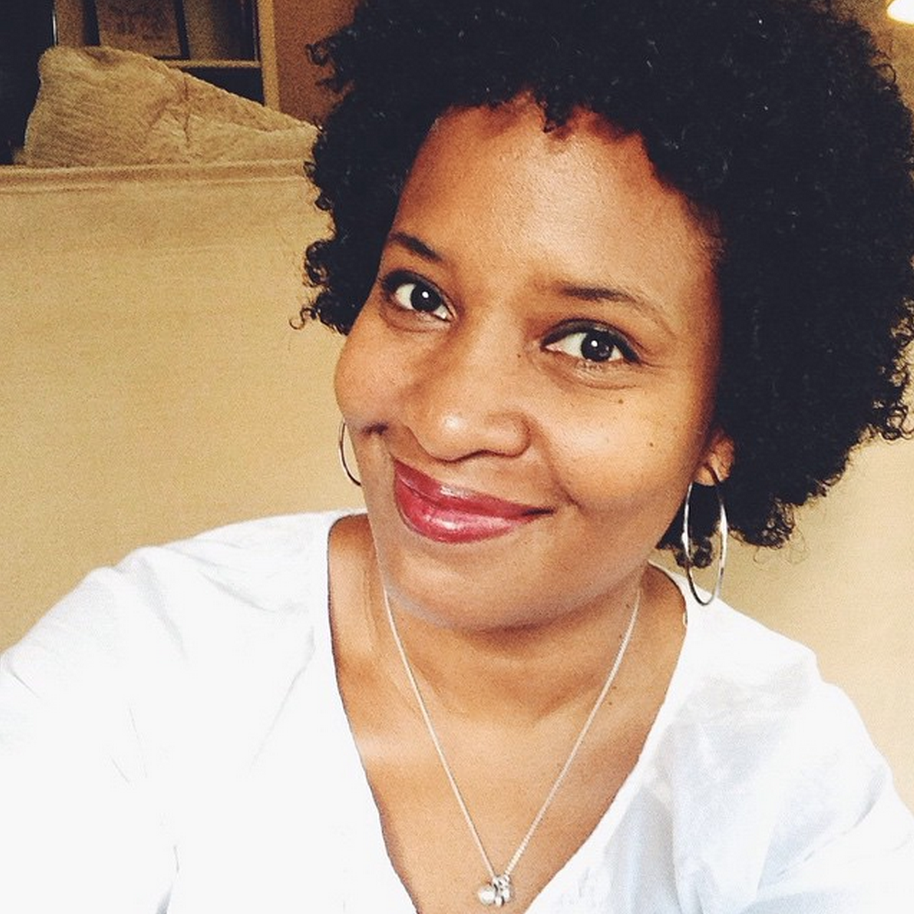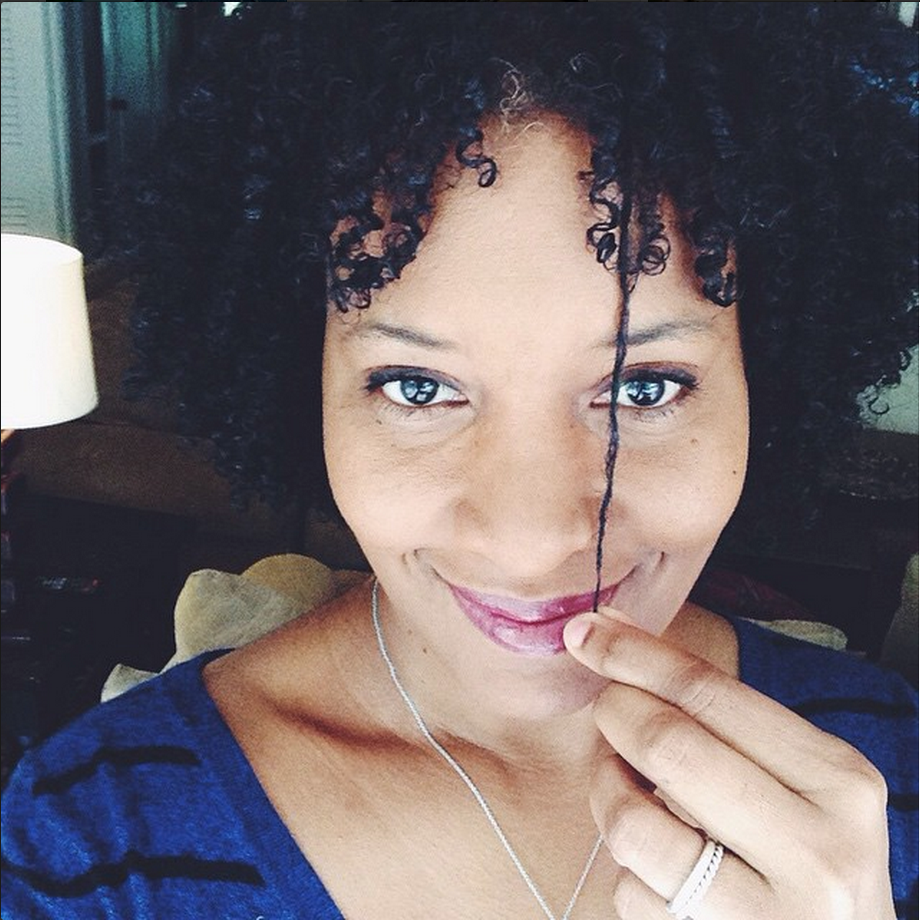togs: my natural hair journey
Today, let's talk about something deeply personal: my hair.
For most of my life, my hair had been the bane of my existence. I remember every morning as a child, with my mother tugging and pulling at my huge hair, trying to tame it, occasionally wiping her brow, "Good LORD, you have a lot of hair!" before diving back in again. My sister, with her looser curls, had the "good hair." My hair, quite simply, was a trial.
Finally, when I was about 10 years old, my mother couldn't take it anymore, and took me for my first chemical relaxer. I admit that the prospect of having long, straight, silky hair, like some of the girls at my elementary school, was deeply exciting. (Although I was living in Trinidad at the time, the school I attended was built to cater to the children of the expats of the American company my dad worked for.) The actual experience of having my hair straightened, however, was horrifying. The process entailed putting a creamy paste consisting of sodium hydroxide, or lye, onto my hair for as long as I could stand it. It's painful, and because my hair is so curly, it required leaving it on my hair for almost 25 minutes -- and I was sobbing, begging them to wash it off after five. At the end of the appointment, though, I did have long, silky black hair, which I proudly swayed and flicked as much as possible ... even though a week later, sheets of my scalp began peeling off.
And of course, any new hair I grew was curly, so the process had to be repeated every 6-to-8 weeks. It only took a couple of times before my mother tired of my wailing at the salon (not to mention that since I hadn't actually combed my own hair in my life before, so I wasn't particularly good at combing the long straight hair either), when she finally decided in exasperation to cut it all off. And I mean all off.
At first, I loved it -- it was so easy, I thought it suited me, and required little or no upkeep! Sure it was a bit annoying that occasionally people would think I was a boy, but I was still living in Trinidad, where it wasn't uncommon for girls to have really short afros, so it wasn't really a big deal.
But then, our family was transferred to Houston.
At 11 years old, moving to a really homogenous suburb of Houston, Texas, my blackness and foreignness could not have stood out more. Both students and teachers at my new school started making fun of the way I looked and the way I talked -- and for me, survival meant changing things, fast. I got really good at speaking with an American accent, and I immediately told my mom I wanted to grow my hair out again, and start straightening it again. And so, back to the salon we went. Eventually I got used to the pain of the chemical relaxers, and stopped complaining. But when, two years later, my father was transferred back to Trinidad, I was relieved to ask my mother to let me go back to my short hair again.
Finally, after living in Trinidad for two years, my dad was transferred again to Houston, and again, I started growing my hair out and straightening it. By this point, I was in my last year of high school, and my beliefs about my own hair were fixed: my hair only looked good if it was cropped extremely short, or if was straightened when long. In my mind, this was an immutable fact, and for the next 15 years or so, until I was in my early 30s, I lived my life by this fact: either cropped very short, or once it grew a couple of inches, chemically straightened. Then, in my 30s, I discovered "texturizing" -- which basically meant using the same chemical lye relaxer, but only leaving it on for a short amount of time, rendering the curls looser. Finally, some relief from the torture of straightening, and a way to give even my teeny-weeny afro the appearance of "good hair"! I was sold, and "texturized" my hair for the next 10 years of my life, long or short.
And then came 2008.
I was 41 years old, the recession had begun and I had just quit my well-paying job to work at home full-time. We were watching our pennies, and I knew that my texturizing-and-or-frequent-haircutting-habit (required to maintain my very short hair) was going to have to be seriously curtailed. So I decided to see what would happen if I stopped texturizing my hair entirely, and gave up on every-six-weeks haircuts. I called it my Recession Hair Experiment. And I started googling and researching hair products that would make my natural hair look ... well, at least respectable.
After a ton of research, I found some products that worked really beautifully, and I was astonished to discover that as my hair grew, I liked it. In fact, I love my hair in its natural state -- a state I hadn't actually seen at any perceptible length for thirty years. I was surprised that my natural curl, with the right conditioners, was exactly the kind of curl I'd been trying to achieve for a decade with texturizers! As my hair grew longer, I got mad at myself for buying into the belief that I had "bad hair" or that my hair in its natural state was unprofessional, or unkempt, or a trial -- and livid to learn that I wasn't the only black girl who grew up feeling this way. In my case, it was just a matter of learning my hair -- the kinds of products that worked best, and the best way to treat it. It's been a long learning process, but in hindsight, for me, it has actually been a fun one. And admittedly, I'm still learning.
The last time I cut my hair really short was October 5, 2013, right before I left for my trip to Australia -- I wanted it as short as possible so I didn't have to think about it on what was promising to be a very full, busy trip. Then when I returned, I decided to start growing it again. Normally, I can stand growing it for about a year or so before I try to cut it again -- but this time, I decided to go whole hog: I've decided to keep growing it until I turn 50 (in 2017). Sort of my little personal outward expression of thriving. And I've not left it grow for that long of a period ... well ever. In fact, at 18 months since that last haircut, this is the longest it's ever been in its natural state since that first chemical relaxer when I was 10. As I mentioned before, I'm loving how it looks -- but there are some practical things I wrestle with, like it takes a lot longer in the mornings to get ready. So I've been wanting to experiment with different ways to wear it, and tie it back. Recently, I came across this little history lesson about tignons, or hair scarves: back in colonial days, tignon laws were passed in Louisiana and the Caribbean mandating that women of colour cover their hair, ostensibly as a way to keep them from vying for the attentions of white colonial men -- and in protest, instead of interpreting them as a badge of dishonour, the women turned them into a fashion statements. You know I loved this. And so I've become determined to learn how to tie a head scarf properly -- what you see in the photo at the top of this post is my first attempt that I'm happy with. I suspect that on busy travel (like my upcoming trip to Malawi) and on hot Texas days, you'll find me in headscarves like this more often (read: I'm about to start spending obscene amounts of money on long, cheap, colourful scarves!). But I love wearing my hair wild and huge, as well. It's lovely to have options.
ANYWAY.
The point is that black hair style and fashion -- especially in the United States, and I suspect anywhere where people of African descent are in the minority -- has social and political implications, and "rules" that society tries to tell us we're supposed to navigate. For this reason, no matter how a black woman chooses to wear her hair, I don't judge. But here's what, friends: when it comes to our hair in its natural state (and this is actually true no matter what race or ethnicity we are), it's all good hair. No matter how you choose to wear your hair, do it because you love how you look, or you like the idea of experimenting with your hair, or as a form of self-expression -- do not do it from a place of shame, which is what I'd been doing all those years.
Ain't nobody got time for that.
my current journey
As someone who is growing out her hair, I love looking at progress photos, so I thought I'd share mine. The following shows my hair the last day I cut it really short (i.e. "the big chop"), and my hair every 6 months since then, most recently a couple of weeks ago. I've been sharing periodic shots on my Instagram account, as well (tagging them all #afroliciousby50, to keep me on task). I'll keep saving all of the 6 months shots going forward, and will likely share them all when I turn 50, a little over two years from now. After that, I'll decide what I'm going to do with my hair -- leave it long, or cut it all off again. Or maybe dreadlock it? You never know.
Song: Don't wanna fight by Alabama Shakes




